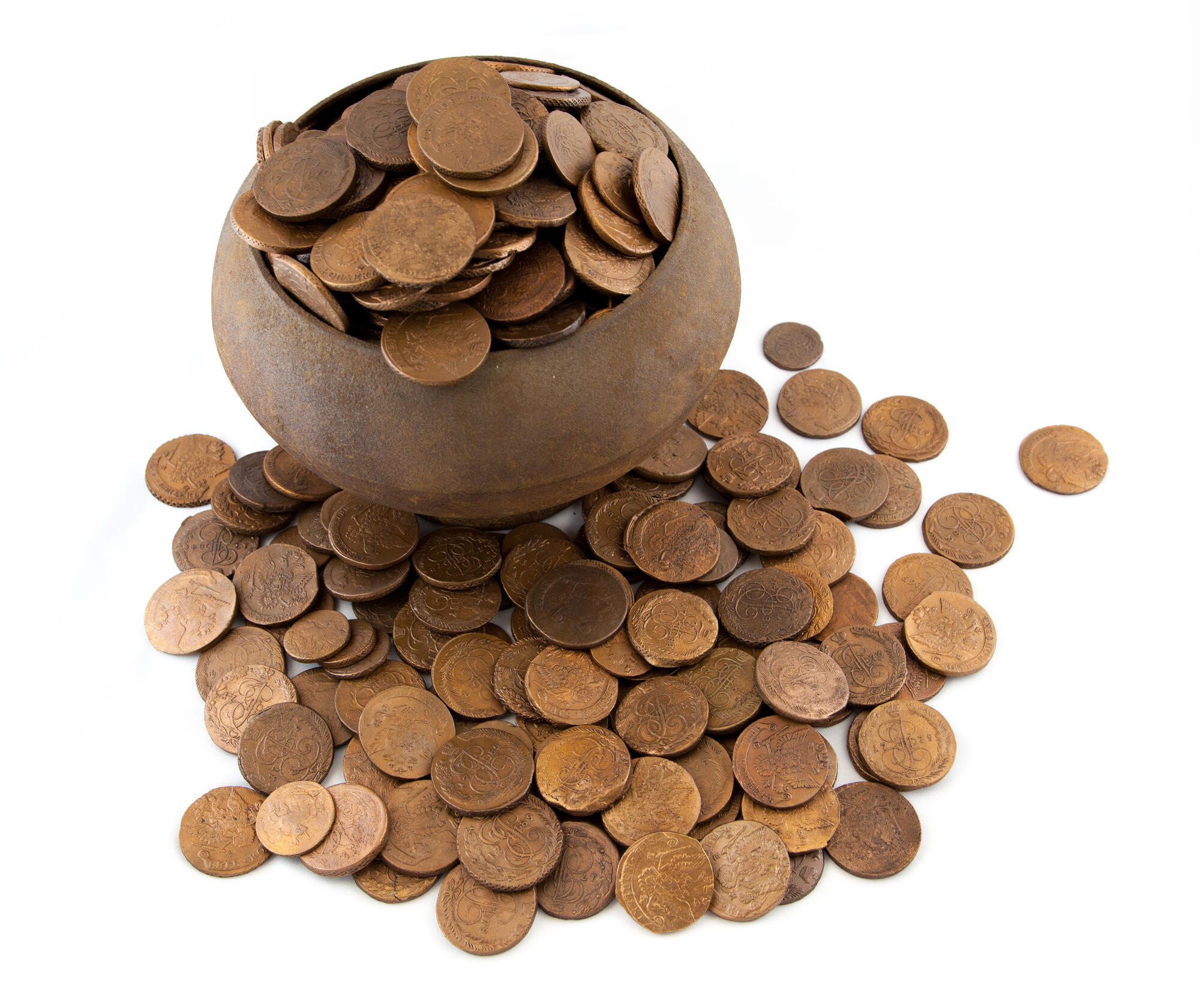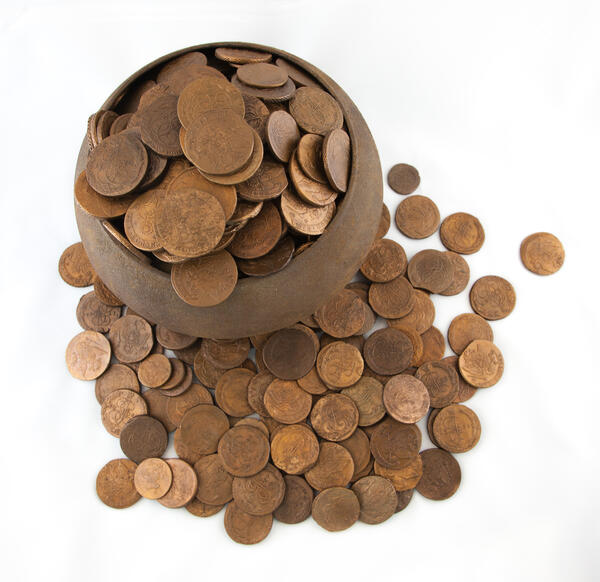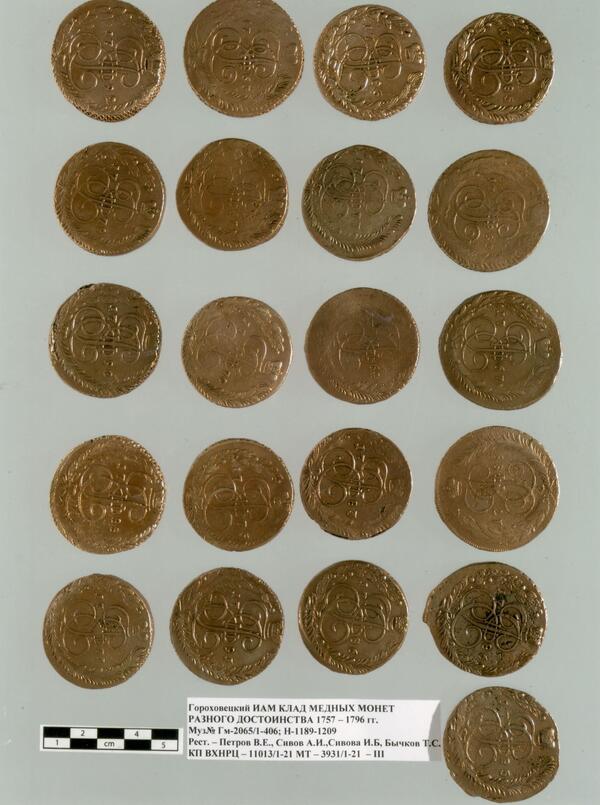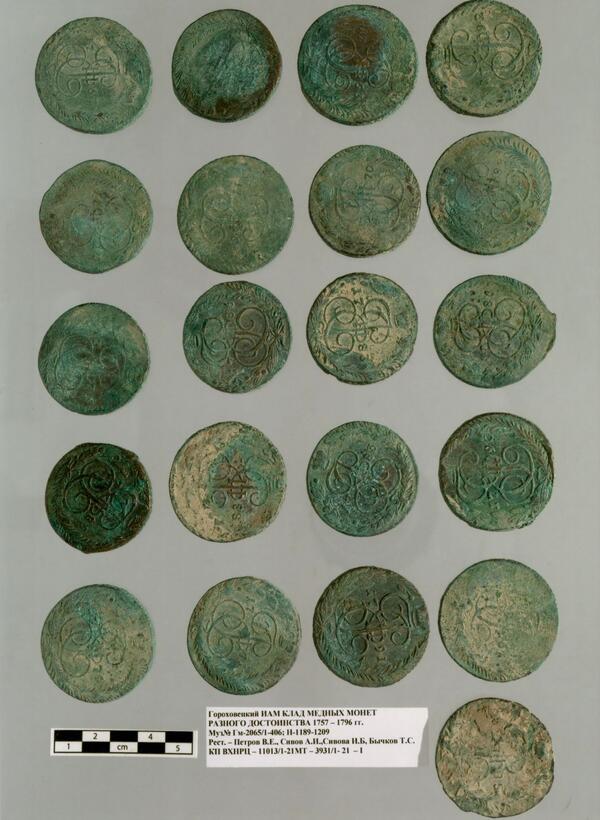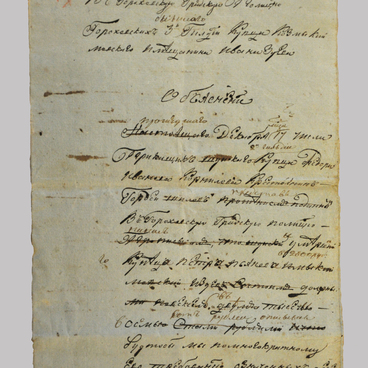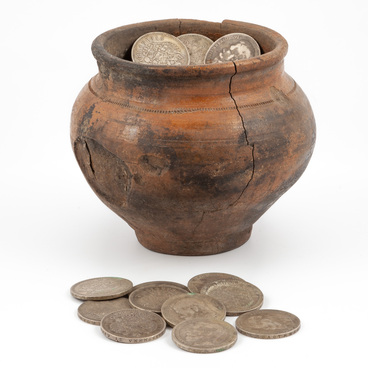Hoards of coins are special finds that are closely connected with ancient river trade routes. This type of treasure was found on the territory of the town of Gorokhovets. It consisted of 406 coins, with 341 of them in the denomination of 5 kopecks and the rest 65 — of 2 kopecks. The hoard amounted to 18 rubles and 35 kopecks.
The coins had different diameters: for 5 kopecks, it ranged from 40 to 43 mm, and for 2-kopeck coins — from 32 to 35 mm. The coins are dated to the period between 1757 and 1796 — the time under Empresses Elizabeth Petrovna and Catherine II. During the latter’s reign, copper coins of the national standard were issued for 5 kopecks, 2 kopecks, a kopeck, a denga (½ kopeck), and a polushka (¼ kopeck).
The design of a 5-kopeck copper coin with Empress Catherine’s monogram was created in 1763 and mostly remained unchanged, except for some small details, until 1796. New 5 kopeck coins were issued every year.
Throughout the Russian Empire’s history, the coinage was carried out by mints located in Moscow, Saint Petersburg, Yekaterinburg, Suzun, and Kolyvan. The corresponding letter designations were minted under the talons of the double-headed eagle. Coins from the collection of the Gorokhovets Museum were made at different mints.
Between 1763 and 1781, lighter Siberian coins were minted from copper, which contained some amount of gold and silver and was supplied by the mines in Kolyvan. Under Catherine II, for the first time in history, silver coins appeared in denominations of 15 and 20 kopecks.
In 2016, the hoard was sent to the Igor Grabar All-Russian Research and Restoration Center. Before the restoration, the surface of the coins had soil and powdery layers that resulted from copper corrosion; their relief was damaged; the ornament, denomination, date, and monogram on some of the coins were barely discernible.
During the restoration, the corrosion products and foreign particles were removed, and the surface of the coins was toned and conserved. The whole collection of the coins is currently exhibited in the Archaeology Hall of the Kanonnikov House.
The coins had different diameters: for 5 kopecks, it ranged from 40 to 43 mm, and for 2-kopeck coins — from 32 to 35 mm. The coins are dated to the period between 1757 and 1796 — the time under Empresses Elizabeth Petrovna and Catherine II. During the latter’s reign, copper coins of the national standard were issued for 5 kopecks, 2 kopecks, a kopeck, a denga (½ kopeck), and a polushka (¼ kopeck).
The design of a 5-kopeck copper coin with Empress Catherine’s monogram was created in 1763 and mostly remained unchanged, except for some small details, until 1796. New 5 kopeck coins were issued every year.
Throughout the Russian Empire’s history, the coinage was carried out by mints located in Moscow, Saint Petersburg, Yekaterinburg, Suzun, and Kolyvan. The corresponding letter designations were minted under the talons of the double-headed eagle. Coins from the collection of the Gorokhovets Museum were made at different mints.
Between 1763 and 1781, lighter Siberian coins were minted from copper, which contained some amount of gold and silver and was supplied by the mines in Kolyvan. Under Catherine II, for the first time in history, silver coins appeared in denominations of 15 and 20 kopecks.
In 2016, the hoard was sent to the Igor Grabar All-Russian Research and Restoration Center. Before the restoration, the surface of the coins had soil and powdery layers that resulted from copper corrosion; their relief was damaged; the ornament, denomination, date, and monogram on some of the coins were barely discernible.
During the restoration, the corrosion products and foreign particles were removed, and the surface of the coins was toned and conserved. The whole collection of the coins is currently exhibited in the Archaeology Hall of the Kanonnikov House.
